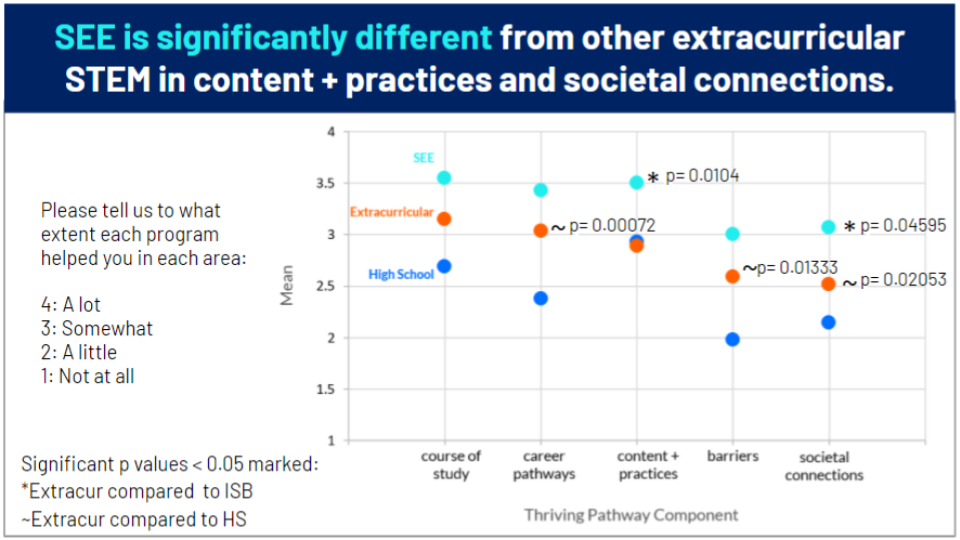Our Impact

Systems Education Experiences (SEE)
is cultivating interdisciplinary skills for solving complex problems.
Together, we are:
Improving STEM Identity
Broadening STEM Participation
Strengthening STEM Persistence
Advancing 21st Century Skills
Building Social Capital
How do we know we are doing these 5 important things?
Please read below for specifics. Every project we undertake achieves several goals at one time for multiple stakeholders. You'll notice we list just a few notable outcomes that have occurred between 2003-2024 on this page. Click the images below to view the particular SEE resources referred to in the numbers and/or statistics. If you want to learn more about our constructs, design principles, and/or see the logic models that drive our work, please dive into all of our web pages, and at any time reach out to the SEE Team at see@isbscience.org.
SEE BY NUMBERS
Since 2003, SEE has formed partnerships that unite students, teachers, interdisciplinary scientists, and others to learn together and take action on today's pressing issues.
As a result, millions of students have participated in quality STEM experiences in classrooms across the world. We measure and track our success through surveys, interviews, usage statistics and analytics. We also learn from missteps by listening to participants and by gathering and analyzing data. This feedback is used to further optimize experiences. Please see below for a snapshot of what people are saying and follow links and buttons for more information.
"Even though it was virtual, this experience changed my life. It changed the way I look at the world. I know now that I can accomplish anything if I put my mind to it. Thank you for all of the encouragement and for taking the time to teach us all."
"The SEE modules are exemplary in bringing authentic research experiences to students, engaging and motivating them to develop a deep understanding of real-world biological and environmental problems."
"I think the system you built here is AMAZING, and I would recommend it to any teacher that wants to teach “real science”. It can also be used in parts, which makes it plausible to do at different parts of the curriculum throughout the year. Last but not least, I want to compliment you on you efficient responses, which made me feel like I am being taken seriously, and that my students are being supported with the issues they come up with."
“We are working on a new, phenomena-based, integrated 9th and 10th grade course. SEE modules will be invaluable! The curriculum is very useful for addressing many Next Generation Science Standards at once and the equipment and materials required are inexpensive and manageable for any teacher and in any setting.”
-
Who is using SEE resources?
The top countries using SEE resources are USA, India, UK, Canada, Portugal.
The top states accessing SEE resources are WA, CA, TX, NY, OR.
In WA State, 70% of school districts have been or are involved with the SEE program.
The California State Board of Education has integrated two SEE modules into their recommended 3-course high school framework, reaching as many as 1.8 million students per year.
What Resources are People Using?
- Of our 72,000 website users: 80% access our curriculum modules in hundreds of schools, through thousands of teachers, across all 50 states and over 100 countries.
- Our online curricular resources are accessed on average 2,000 times per month.
- Over 25,000 have watched our laboratory technique instructional videos for using a micropipette, hemocytometer and our videos that highlight Systems Thinkers in STEM.
- California State's Science 3-Course Framework integrates SEE's Introduction to Systems and Ocean Acidification modules.
Who are our participants and how are they benefiting from SEE programming?
Each year, over 300 high school students apply for an internship position.
Since 2021, we have provided an opportunity for every single participant who completes a full application.
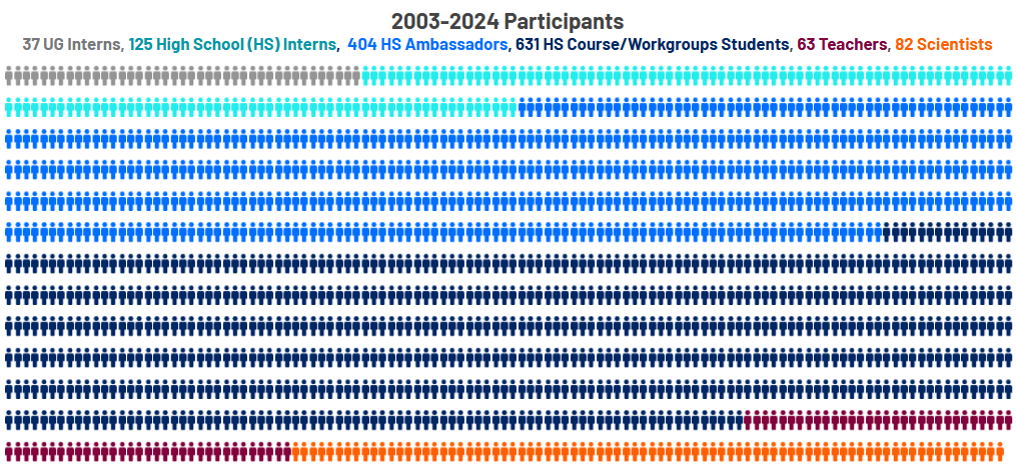
SEE provides experiential learning through hands-on curriculum modules, teacher training, and student extracurricular programs.
In all contexts, we are measuring change and we are noticing improvements in: 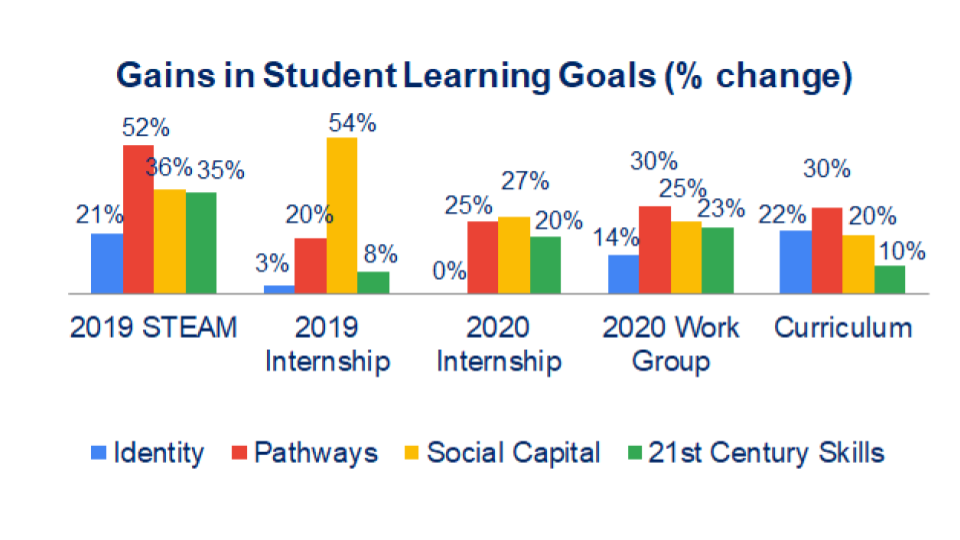
- STEM Identity & Engagement
- Persistence along STEM Pathways
- Social Capital
- 21st Century Skills (including Systems Thinking)
Percent Change was calculated for cohorts of HS students completing various Systems Education Experiences. Internships, workgroups and STEAM Ambassador programs were run by SEE Staff. The curriculum cohort was run by teachers in formal classrooms in a rural school district with a high percentage of students from indigenous tribes. STEAM Ambassador Cohort n=18, Internships (2019 n=10, 2018 n=8), 2020 Workgroup n=41, Curriculum n=190.
SEE plays an important role in building thriving STEM pathways.
A 2019-2020 yearlong research investigation, led by Dr. Shelley Stromholt of Aspect Research + Evaluation, aimed to examine the potential for programs like SEE to address issues of equity in STEM education through learner engagement in authentic systems STEM. This study had the additional goal of examining how this engagement supports young people from underrepresented groups to make progress on STEM pathways. We identified aspects of SEE that contribute to youth engagement in using systems thinking and STEM practices in formal and informal settings to address complex, relevant, and contemporary problems. We surveyed the STEM journey of 142 previous SEE high school interns and ambassadors and compared their experiences along the Thriving Pathway. The concept of thriving, from Schreiner and colleagues (2010) is a desirable goal in STEM pathways and a concept that attends to dimensions such as how students are academically engaged, how they make efforts toward goals, and how they connect to their community. We used the concept of thriving to understand how SEE learners are supported, or not, by their experiences with SEE to make progress toward these aspects of STEM success. For more information, please see our Nature Humanities and Social Sciences Communications publication, Consequential Insights for Advancing Informal STEM Learning and Outcomes for Students from Historically Marginalized Communities.
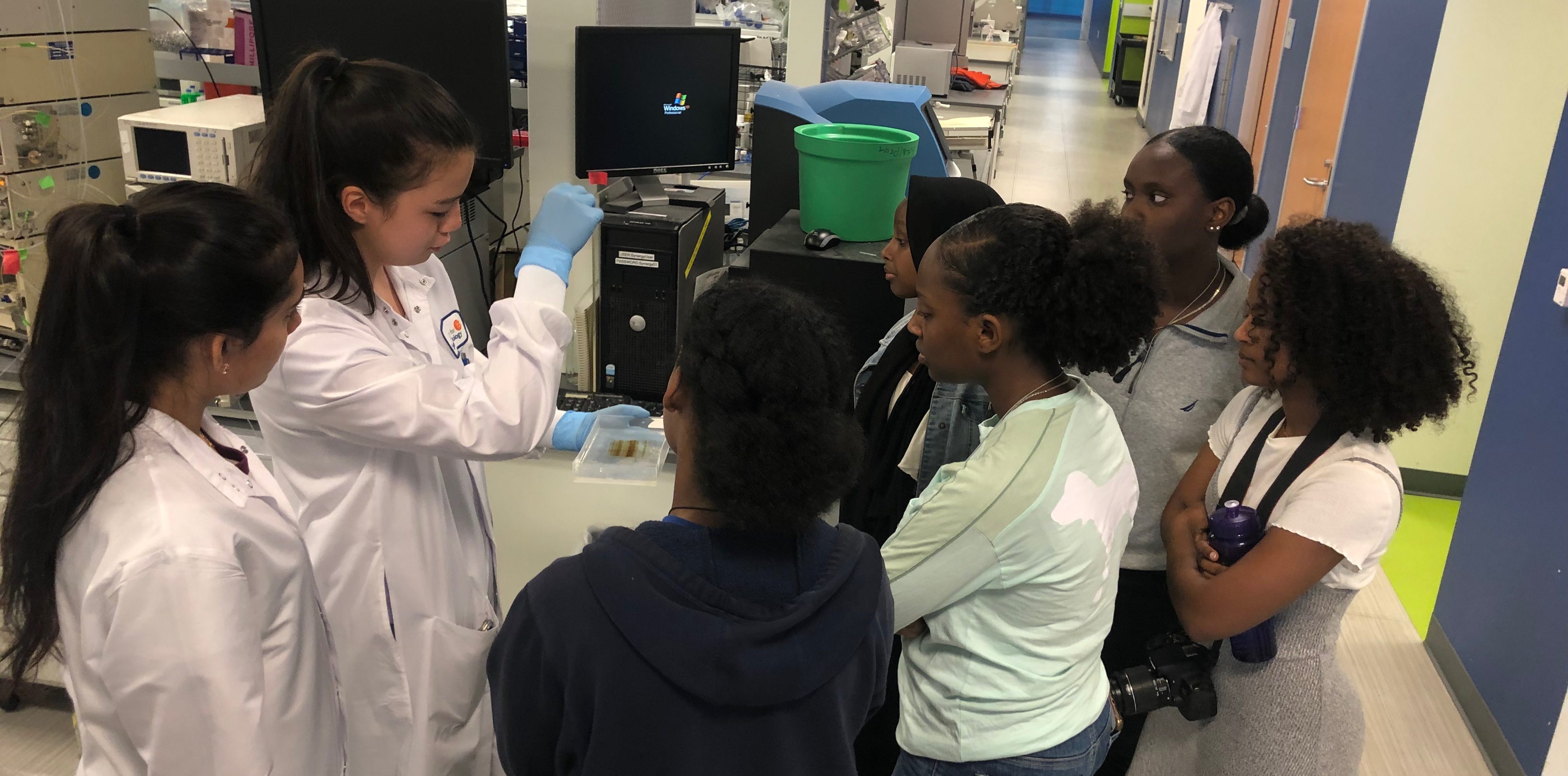
High School Interns describing their experiment to visiting students.
What are teachers saying after working and/or learning with us?
SEE teacher participants report having renewed energy, new ideas, and ready-to-go strategies and materials for their classrooms. Teachers also feel supported with an expanded network of colleagues to turn to for ongoing support.
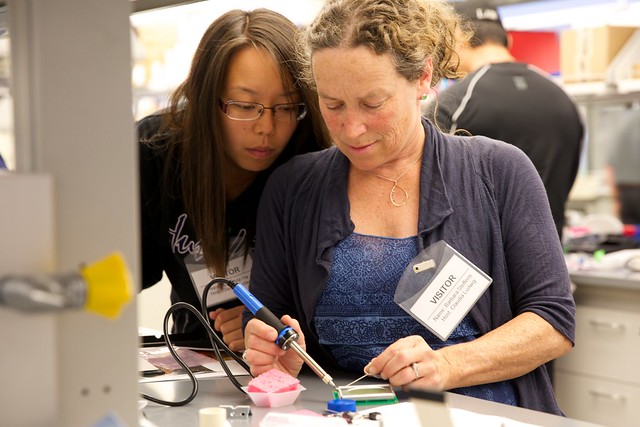
Teachers in a weeklong workshop creating instrumentation to bring back to their classrooms.
- 4,000+ teachers have been trained through our direct interactions and professional development institutes.
- 34,000 additional teachers have received introductory (15-180 minutes) training.
- 63 teachers have been trained through our onsite summer internships (many for multiple summers).
- 800+ kits, complete with materials and cultures, have been provided to enable successful lab experiences.
- Learn more about our opportunities for teachers at our For Teachers page and view our Timeline and News pages for more examples of our work.
Because we provide free online curriculum modules we are not aware of all people using our materials and are not aware of the impact on their learning and careers. If you are someone who has used our materials or participated in SEE and would like to share your experience, please contact us. Or if you are interested in becoming a partner to broaden our impact, please see the Partners page and/or consider a gift to STEM Education today.


